I was the slowest one in the group, but I wasn’t in any rush. One foot in front of the other; my feet left a trail of prints in the dirt path behind me. I could hear my friends ahead of me, gasping in awe as they crested the rim and peered into the stratovolcano of Kenya’s Mount Longonot.
Slowly, surely, I climbed the last few steps and immediately caught my breath in my throat. We had been hiking Mount Longonot all morning, but the view of the green-coated crater was worth every moment.
A local hotspot, the Mount Longonot hike often gets lost in the shadow of Mount Kenya when it comes to the tourist scene. The trek might not be as long but the sweeping peaks are just as striking, plus it’s perfect for those that prefer a day hike from Nairobi with plenty of time to back back exploring the city by night.
In this guide, I’ll share everything you need to know to hike Mount Longonot. Traveling to Kenya? Check out 15 things to know before visiting!
This site uses affiliate links to share products that I use and love! If you click on one of the links I may receive a small commission at no additional cost to you. This helps keep my site up and running — thank you!

Guided Tours of Mount Longonot
Don’t want to DIY your own hike? Check out one of these highly recommended guided tours of Mount Longonot!
⛰️ Private Tour of Mount Longonot and Lake Naivasha – Explore some of Naivasha’s best sites with a private guide
🥾 Adventure Hiking Mount Longonot – Join an expert guide in hiking around Mount Longonot’s crater
🚣♂️ Naivasha Hiking and Boat Tour – Explore Mount Longonot and relax on a boat tour of Lake Naivasha
The Mount Longonot Basics
Total Distance: 6.2km up and back, 13.5km including rim hike
Duration: 3-6 hours hiking time
Difficulty Level: Moderate to advanced
Location: Naivasha, Kenya, within Mount Longonot National Park | Click here to view on Google Maps
Mount Longonot Entrance Fee: Citizens & Residents – 250 KSH, Non-Resident Adults – $20 USD, Non-Resident Children – $15 USD
Opening Times: 6AM-6PM every day
What is Mount Longonot?

Mount Longonot is a dormant stratovolcano – but don’t let that scare you away, as the crater hasn’t erupted since the mid 1980’s. These days, the densely forested crater floor is home to its very own ecosystem.
Mount Longonot lies just outside the city limits of Naivasha, about 90km from the Kenyan capital of Nairobi. Besides the hiking trail, the area is also popular for wildlife safaris, and lies Lake Naivasha, sweeping views of which can be viewed from the summit.
The name “Longonot” actually comes from the Maasai word Oloonong’ot, meaning “mountain of many steep ridges.” It doesn’t take long looking at Mount Longonot to understand why!
Know Before You Go to Mount Longonot:
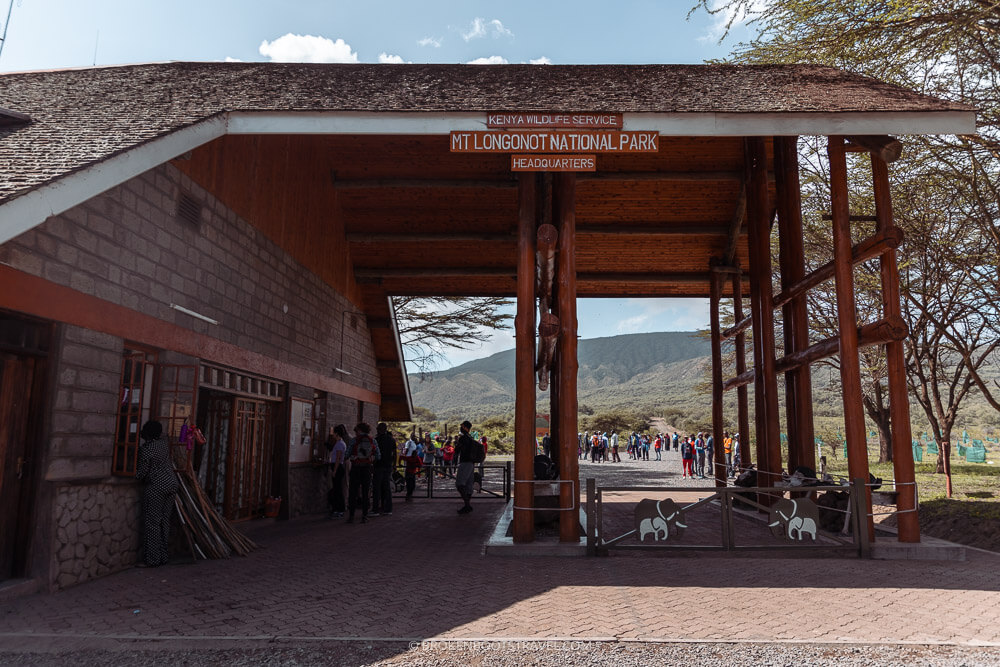
Ditch your plastic
Single-use plastic water bottles are not allowed in Mount Longonot National Park. You will be asked to return your water bottles to your car, or purchase a reusable water bottle for 100 KSH (~$1 USD) at the gate. I recommend bringing your own reusable water bottle from home – this Water-To-Go filtration bottle allows you to drink water from anywhere, and cuts down on single-use plastic long-term!
Visit early
Since this hike is popular with locals, I recommend arriving early to beat any crowds. Weekdays would also be the best time to visit to avoid crowding at the peak and along the trails.
Keep an eye on the weather
Most of this trek is along a dirt path, which can quickly turn to mud with heavy rain. Keep an eye on the weather to avoid getting washed down the trail and make sure you wear proper shoes for potential muddy conditions.
Take note of altitude
While Mount Longonot is no Everest, it’s certainly higher elevation than you might be used to at 2780 meters. Altitude can often present itself in fatigue, headache, and dehydration, so make sure to be gentle with yourself and pack plenty of snacks, water, and even aspirin if you think you’ll need it.
The Hiking Route
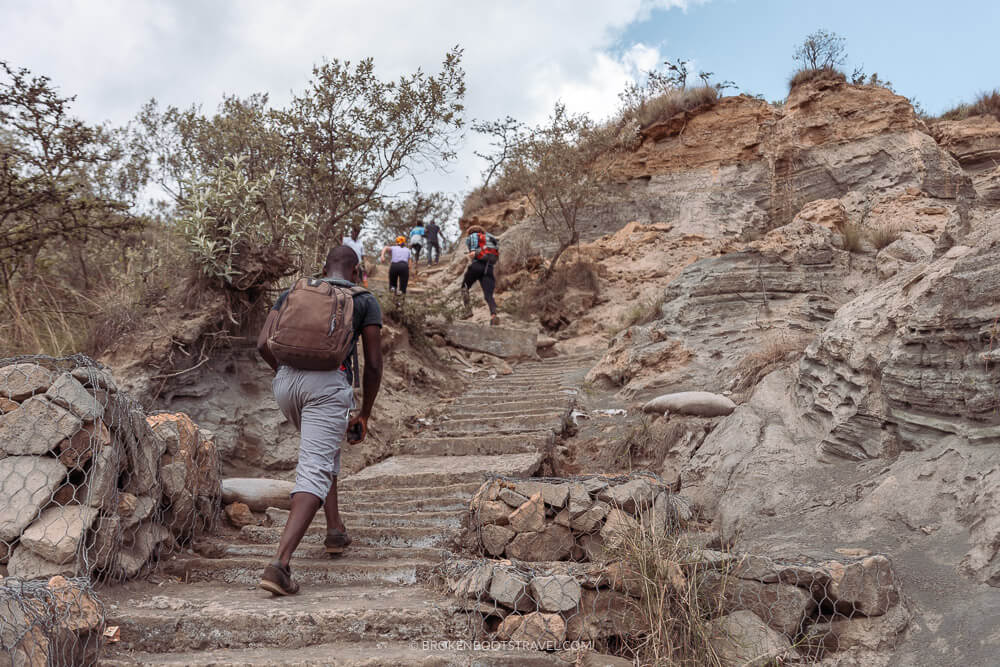
While there is one main trail up Mount Longonot, you can chose whether to hike solely to the rim of the crater (6km roundtrip total), or continue your hike around the rim of the crater (13.5km rountrip total)
Hiking to the Crater
The Mount Longonot trailhead is located right behind the information center. The first part of the trail is fairly wide and flat, but it quickly turns uphill and basically does not stop until you reach the peak. Don’t forget to take breaks and look out behind you at the views of the Great Rift Valley.
About 2 kilometers into the hike, you will reach a false peak with a gazebo. You’re about to attempt the most challenging part of the hike, so I recommend taking a quick break here. While you rest, you can admire the views, or stare in horror at the nearly vertical trail you’re about to head up.
The second part of the hike was by far the most challenging part for me. The second uphill is extremely steep, and while there are some sections with stairs to ease the weight, other sections just need to be taken slowly. However, you’ll be able to see the crest of the crater in the distance the whole time to keep you going.
Finally, you’ll crest the rim of the crater and be able to look into the flora-filled crater below. Now is the perfect time to enjoy that chapati you’ve packed in your backpack or snap a photo – the view is truly epic.
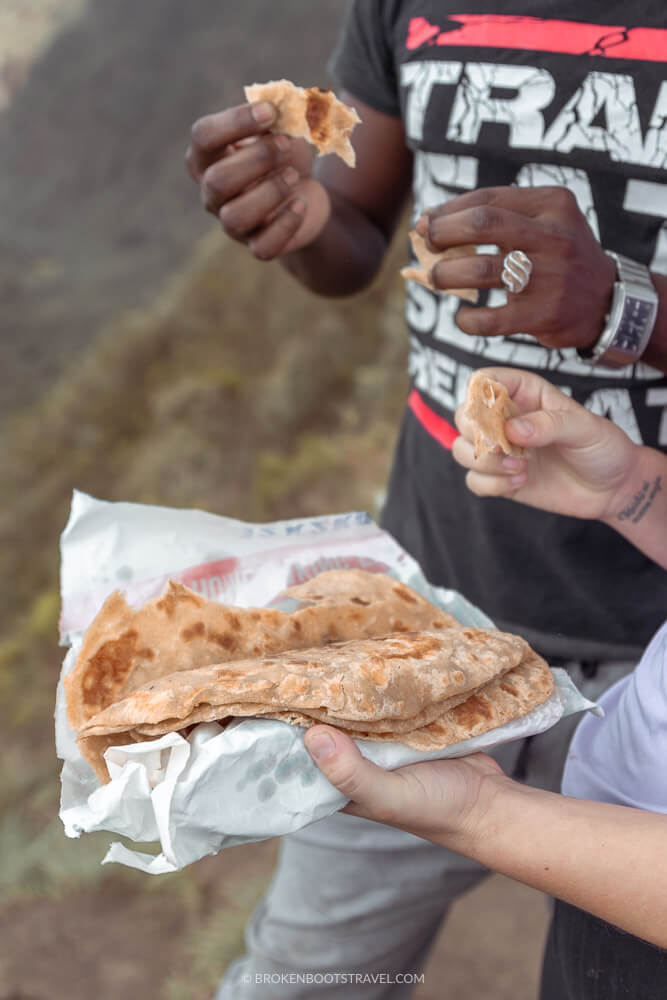
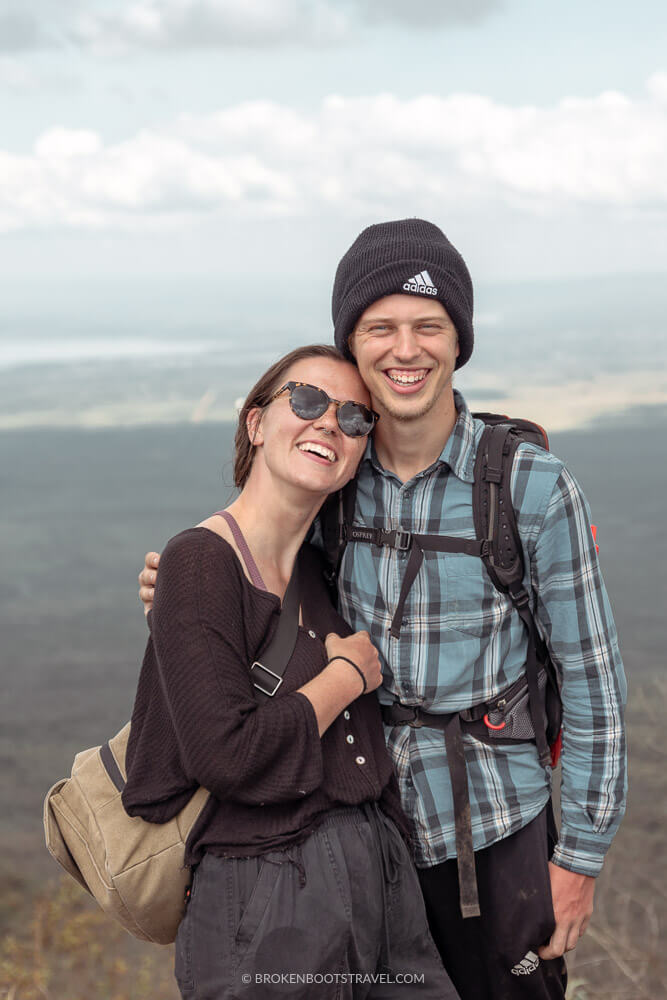
Hiking Along the Rim
While many hikers chose to return from the rim lookout point, you also have the option to continue 7.2km around the rim of the crater. The true peak of Mount Longonot is actually along this route – which means you’ll be traveling more uphill from here!
You can go either way along the crater, but if you want to get most of the hills over early, I recommend going counter-clockwise around the crater. You’ll reach the peak quicker, and enjoy (somewhat) downhills the rest of the way around.
You’ll know you’ve reached the peak when you encounter a bright orange sign welcoming you to the summit. Take some time to admire the epic views over the crater and far into the Great Rift Valley beyond.
From here, the only way to go is down! Finish up the loop around the crater and come back along the same trail, ending at the Mount Longonot information center.
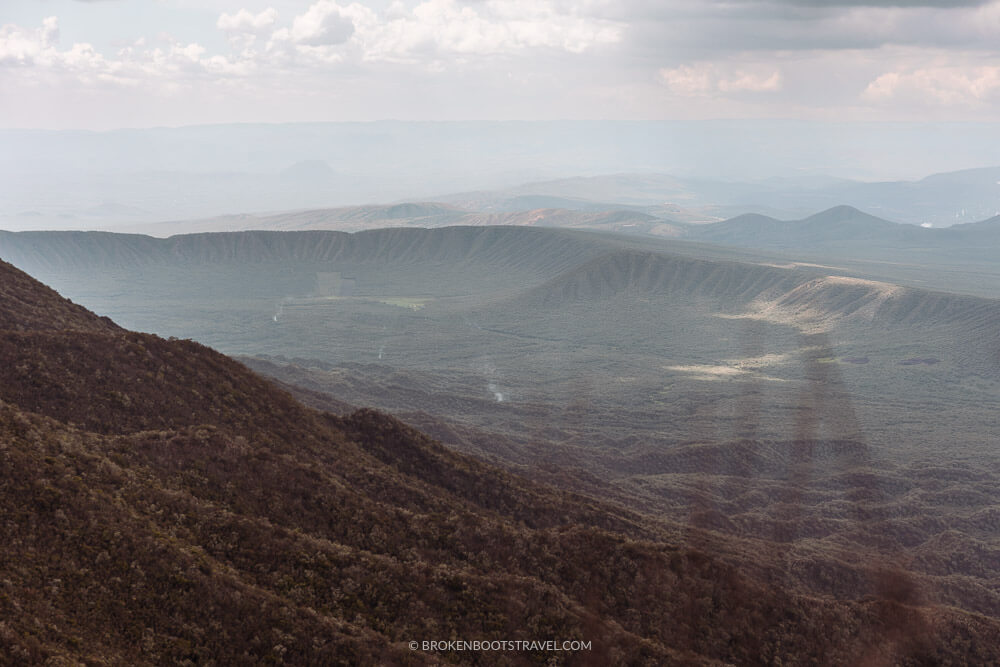
How to get to Mount Longonot
Mount Longonot is located 90km from Nairobi, outside the city of Naivasha. It can easily be done in an afternoon, so it’s a great day-trip from Nairobi, or a great addition to your Naivasha itinerary. I totally recommend this – check out Hell’s Gate National Park nearby for a biking safari or soak in the Olkaria Hot Springs!
Having your own car or hiring a private taxi are by far the most efficient ways to reach Mount Longonot. I highly recommend this option if you are trying to do Mount Longonot as a day-hike from Nairobi. However, there are ways to take public transportation all the way to the trailhead if desired.
From Nairobi to Naivasha
From Nairobi’s OTC Station (view on Google Maps), catch a matatu towards Naivasha town (Cost: 200-300 KSH). The ride is about 2 hours. Matatus generally drop passengers along Nakuru-Nairobi Road outside Naivasha town.
From Naivasha to Mount Longonot
Once in Naivasha town, you have a few options: taxi, boda boda, or matatu. All three congregate near the Nakuru-Nairobi Road, so if you’re coming via matatu, you’ll likely be approached by people offering rides to Mount Longonot the moment you step out of the van. Note that the ride is about 45 minutes from Naivasha town, so make sure you choose a mode of transportation you’ll be comfortable with.
We personally shared a private taxi between four people from our campsite in Naivasha to Mount Longonot. The taxi driver charged us $30 for the afternoon and waited for us at the trailhead to take us home afterwards. I highly recommend paying a little extra for a private taxi so you won’t have to wait for a ride when you return from your hike!

Why Hike Mount Longonot?
Despite the challenge, the Mount Longonot hike was one of my favorite treks I’ve ever finished. There’s something about accomplishing something difficult that just feels amazing – and even more so when you have unbelievable views the whole time.
I think Mount Longonot is the perfect in-between for those who might not be up to a multi-day trek but want a satisfying challenge. But don’t forget to treat yourself to a Tusker after – you deserve it!
Whether you’re venturing into the Maasai Mara after your journey or looking for more hikes around the world, we’ve got everything you need here! Check out all my hiking guides from my time living in the UAE, or check out my guide to the Lycian Way, the best hike in Turkey!
Kenya Quick Links
✈️ Flights – Use Kiwi.com or WayAway to find the cheapest and fastest flights to Kenya
🛏️ Accommodation – Find the best places to stay throughout Kenya on Booking.com
✅ Get Insured – I personally use Safety Wing Nomad Insurance for my travels all around the world! VisitorsCoverage is another great option.
🚗 Rent a Car – Find the best deals for a Kenyan road trip on RentalCars.com
🗺️ Find Things to Do – Check out Get Your Guide or Viator for exciting adventures all around Kenya
☎ Buy a Sim – Airalo offers eSIMS for over 200 countries and regions



Love stories? Subscribe to my newsletter to get my latest updates delivered straight to your inbox every month. One email a month + no spam? Sign me up!
Virginia Taylor (Ginna) is a travel writer and photographer exploring the world until her boots wear through. She’s currently on a mission to explore all 32 departments of Colombia, though she formerly called the Middle East home. Want to know more? Visit the About Page.


Pingback: 24 Hours in Nairobi: How to Spend One Day in Kenya's Capital City
Pingback: A Safari Guide to the Best Tour Experience in the Beautiful Rift Valley - Local and Abroad Tours
Nice 👍